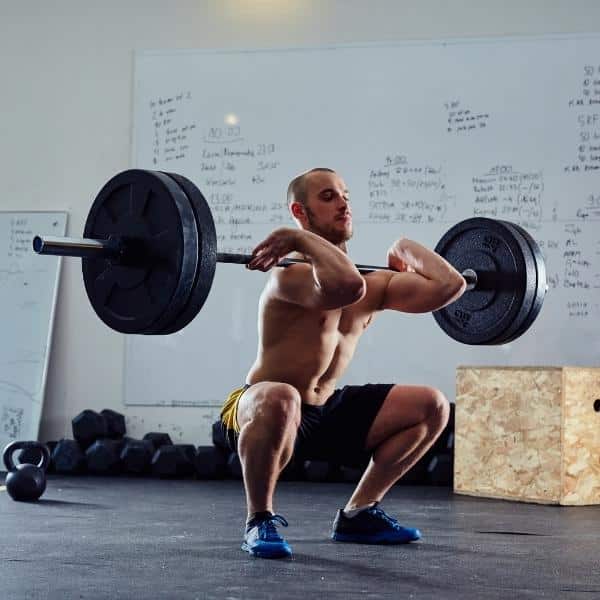How do you master resistance training 101 as a beginner? To excel at resistance training, perfect the training principles, and avoid big mistakes. Beginners must know certain things to add muscle, burn fat, and avoid plateaus. Not all mistakes are fatal. After all, making mistakes is human. Here is a list of the 5 things you cannot afford to mess up:

To graduate from Resistance Training 101, you must know your one-repetition max (1rpm)
The 1rpm influences almost every lift you perform in resistance training. It determines the sets, reps, and weight. To stimulate muscle growth, you must engage the glycolytic energy pathway. This energy pathway provides the body with glucose, an intermediate form of energy—the body stores glucose right in the muscle cell.
Your muscles grow larger to support the need for more glucose. Thus, performing 8 to 12 repetitions of each exercise with a one-minute rest time becomes important. The weight required to lift with this number of repetitions is 70% to 75% of your 1rpm.
The 1rpm also correlates closely to muscle size. As you get stronger, your muscles get bigger. Besides increasing muscle size, you also increase functional strength, which differs from mechanical strength. Functional strength allows you to perform natural activities and sports better.
You should know your 1rpm on the major lifts (bench press, deadlift, squat, military press, and back row). Finally, test your 1rpm every 4 to 6 weeks because it changes as the body adapts to resistance training. Use progressive overload with resistance training to stay one step ahead of your body. Bodybuilders know how to build muscle through a diet and workout program.
You must build an impressive body in the kitchen, not the gym. Do not learn this lesson the hard way
Resistance training 101 acts as a catalyst, not a building block for muscle. You build muscle and store fat with food. The body uses protein to build muscle, other tissues, enzymes, cells, and hormones. Most serious bodybuilders try to eat their weight in grams of protein. Not only does protein build muscle, but it also turns to energy in a process called gluconeogenesis. Your hormones determine what function protein carries out in your body.
Protein performs more different tasks than any other nutrient. Because your hormones determine how to use protein, you must force them to use protein to build muscle. You do this with resistance training. By forcing the body to perform resistance training, you cause your body to adapt and change. The body does this when hormones tell protein to focus on building energy. By completely understanding resistance training, you can use your diet and workout together to accomplish your fitness goals.
Numbers determine how much muscle you can build and fat you can burn.
There are key numbers that every student who excels at Resistance Training 101 knows by heart
Key numbers determine how to use resistance training to build muscle and burn stomach fat. Building muscle and burning stomach fat is not magic but science. Once you reach certain numbers, then the outcomes become inevitable.
It takes 3500 calories to burn a pound of fat or build a pound of muscle. However, you build muscle when you eat more than you burn calories. The only food calories that build muscle are protein. Also, as mentioned above, your body uses protein for other things. So, if you eat 3500 calories of protein, 30% could build muscle, while your body uses the remaining 70% for other things.
Besides the calories in fat and muscle, you also need to know the number of calories used in your metabolism
Your metabolism can make it extremely difficult to build muscle or burn stomach fat. The average metabolism uses 10 times the calories of a person’s body weight.
People who eat and stay skinny have a higher metabolism than the average person, and people who easily gain weight have a slower metabolism.
When you eat, your metabolism first uses the calories in your food. Your body then applies a calorie surplus or deficit to muscle growth or fat loss. This causes everyone to respond differently to resistance training and dieting.
We mentioned your 1rpm, so you must also know it. Other numbers also determine your health and fitness. Your doctor can inform you about those numbers. Keep it simple initially, and let your knowledge of resistance training grow as your body grows. If you avoid the big mistakes, you can see big gains at the start of a resistance training journey.

The quickest way to fail Resistance Training 101 is to substitute when you need to supplement
The most important activities for your body are natural activities, not exercise. Your body determines how it changes by what you do most of the time. A person who walks, stands, drinks enough water, and gets the right amount of sleep will outperform someone who only does resistance training.
Exercise and dieting should be supplements, not replacements, that you do besides natural activities. Laying on the couch all day and thinking 1 hour in the gym will fix that is a big mistake. Your body uses a smart and conservative approach to energy. It knows how to reclaim energy from resistance training when you do not stay active.
Here is a list of the three best natural activities that you should perform and track:
- Sleeping
- Walking
- Standing
Sleeping helps the body to rebuild and recover muscles and make hormones. While walking and standing, create strong, well-developed legs and butt. Standing and walking prevent you from sitting and lying around all day. There are some great apps to help you with these activities.
One of the best investments you can make is a smartwatch. You can use it to track your sleep, steps, and how often you stand during the day. Check out Pillow in the app store for tracking sleep, and most fitness watches come with standing and walking apps. A lighter weight allows you to fatigue muscles and work on your form without risking injuries.
It’s better to lift a lighter weight the right way than to lift a heavier weight the wrong way
Use the correct technique to prevent injuries and stimulate tissue growth in the targeted muscle. The correct technique uses the concentric to drive force, eccentric to slow momentum, and isometric to stabilize the weight during each exercise.
For example, on the squat, go down slowly, pause for a split second at the bottom of the lift, explode back up, pause for a split second at the top, and then repeat. The split-second pause prevents bouncing the weight, losing form during the lift, and using momentum to cheat. The correct form puts the optimum stress level across the muscle and works the primary and supporting muscles.
Also, lifting too much weight activates the ATP-CP energy pathway, which does not build muscle. As noted above, to build muscle, you must activate the glycolytic energy pathway, which requires longer resistance training to move beyond the ATP-CP pathway but not too long to move into the oxidative energy pathway. Here is a list of three energy pathways your body can use during resistance training and the repetitions needed to activate them:
- ATP – CP energy pathway (strength building) lasts 10 seconds and activates during 1 – 6 repetitions of 85% – 100% of 1rpm.
- The glycolytic energy pathway (muscle building) lasts for 1 minute and activates during 8 – 12 repetitions of 70% – 80% of 1 rpm.
- The oxidative energy pathway (cardio building) lasts until muscle failure and activates during 14 and up repetitions of 60% and less than 1rpm.
Basketball burns many calories while providing fun and muscle definition.
Finally, you must treat consistency, compliance, and balance with respect. If you violate these three rules, nothing else matters
The top five things you must know to master Resistance Training 101 mean nothing without consistency, compliance, and balance. To build a great workout program, it must be one that you can follow, maintain, and work with your diet and lifestyle. Building muscle and burning body fat are slow processes. The numbers support slow processes, and you cannot rush them.
It takes 3500 calories above your metabolism to gain muscle and 3500 calories under your diet to burn body fat. These are large numbers when you consider the average diet and metabolism is 2000 calories, which means you need 5500 calories to build or burn one pound.
Also, consider your body can slow your metabolism, not burn stomach fat, and use protein for other things, not to build muscle. Therefore, to succeed, find and stay with a scientific-backed resistance training program. However, keep a balanced approach and ensure that your workout and diet supplement does not substitute for natural activities and a healthy lifestyle.




